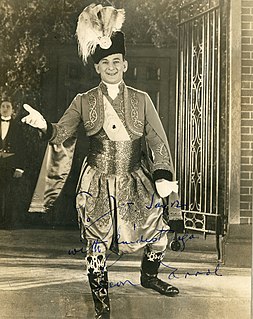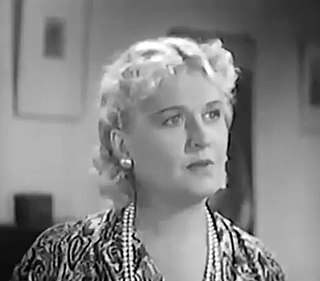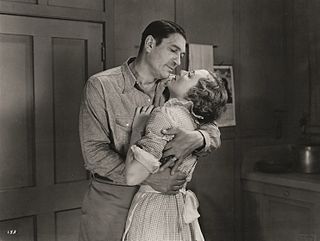Related Research Articles

Errol Mark Morris is an American film director known for documentaries that interrogate the epistemology of its subjects. In 2003, his documentary film The Fog of War: Eleven Lessons from the Life of Robert S. McNamara won the Academy Award for Best Documentary Feature. His film The Thin Blue Line placed fifth on Sight & Sound's poll of the greatest documentaries ever made. Morris is known for making films about unusual subjects; Fast, Cheap & Out of Control interweaves the stories of a wild animal trainer, a topiary gardener, a robot scientist and a naked mole rat specialist.

The Thin Blue Line is a 1988 American documentary film by Errol Morris, about the trial and conviction of Randall Dale Adams for the murder of Texas police officer Robert Wood. Morris became interested in the case while doing research for a film about Dr. James Grigson, a psychiatrist known in Texas as "Dr. Death" for testifying with "100 percent certainty" of a defendant's recidivism in many trials, including that of Randall Adams. The film centered around the "inconsistencies, incongruities and loose ends" of the case, and through his investigation, not only comes to a different conclusion, actually obtained an admission of Adams' innocence by the original suspect of the case, David Harris. The "thin blue line" in the title "refers to what Mr. Morris feels is an ironic, mythical image of a protective policeman on the other side of anarchy".

The 74th Academy Awards ceremony, presented by the Academy of Motion Picture Arts and Sciences (AMPAS), took place on March 24, 2002, at the Kodak Theatre in Hollywood, Los Angeles. During the ceremony, AMPAS presented Academy Awards in 24 categories honoring films released in 2001. The ceremony, televised in the United States by ABC, was produced by Laura Ziskin and directed by Louis J. Horvitz. Actress Whoopi Goldberg hosted the show for the fourth time. She first hosted the 66th ceremony held in 1994 and had last hosted the 71st ceremony in 1999. Three weeks earlier, in a ceremony held at the Regent Beverly Wilshire Hotel in Beverly Hills, California, on March 2, the Academy Awards for Technical Achievement were presented by host Charlize Theron.

Husbands and Wives is a 1992 American comedy-drama film written and directed by Woody Allen. The film stars Allen, Mia Farrow, Sydney Pollack, Judy Davis, Lysette Anthony, Juliette Lewis, Liam Neeson and Blythe Danner. The film debuted shortly after the end of Allen and Farrow's romantic and professional partnership, and was the last of their 13 films together. The movie is filmed by Carlo Di Palma with a handheld camera style and features documentary-like interviews with the characters interspersed with the story.

Leon Errol was an Australian-American comedian and actor in the United States, popular in the first half of the 20th century for his appearances in vaudeville, on Broadway, and in films.

The Charge of the Light Brigade is a 1936 American historical adventure film from Warner Bros., starring Errol Flynn and Olivia de Havilland. It was directed by Michael Curtiz and produced by Samuel Bischoff, with Hal B. Wallis as the executive producer. The film's screenplay is by Michael Jacoby and Rowland Leigh, from a story by Michael Jacoby, and based on the 1854 poem "The Charge of the Light Brigade" by Alfred, Lord Tennyson. The music score was composed by Max Steiner, his first for Warner Bros., and the cinematography was by Sol Polito. Scenes were shot at the following California locations: Lone Pine, Sherwood Lake, Lasky Mesa, Chatsworth, and Sonora. The Sierra Nevada mountains were used for the Khyber Pass scenes.

Vivien Oakland, was an American actress best known for her work in comedies in Hollywood in the 1920s and 1930s, most notably with the Hal Roach Studios. Oakland appeared in 157 films between 1915 and 1951.
Irving Asher was an American film producer. Born in San Francisco in September 1903, he began his film production career in Hollywood in 1919. After joining the staff of Warner Brothers he was sent over to England as the managing director of their subsidiary Teddington Studios in Middlesex in the mid-1930s. Flynn played his first significant part as the lead in the now-lost Murder at Monte Carlo (1935), which was produced by Asher. Asher went on to join Alexander Korda's London Film Productions where he worked on the epic The Four Feathers (1939). Subsequently, he returned to Hollywood to work as a producer for Metro-Goldwyn-Mayer, where he earned his only Academy Award nomination for the 1941 Greer Garson film Blossoms in the Dust.

A Night at the Movies is a short film starring Robert Benchley. It was Benchley's greatest success since How to Sleep, and won him a contract for more short films that would be produced in New York.
Al Boasberg was an American comedy writer in vaudeville, radio, and film, as well as being a film director.

La Cucaracha is a 1934 American short musical film directed by Lloyd Corrigan. The film was designed by Robert Edmond Jones, who was hired by Pioneer Pictures to design the film in a way to show the new full-color Technicolor Process No. 4 at its best. Process No. 4 had been used since 1932, mainly in Walt Disney cartoons. Jock Whitney and his cousin C. V. Whitney, the owners of Pioneer, were also major investors in Technicolor. La Cucaracha was made like a short feature and cost about $65,000. The usual short film at that time cost little more than $15,000 to film.
Give Me Liberty is a 1936 American drama short or historical "special" filmed in Technicolor, produced and distributed by Warner Bros., and directed by B. Reeves Eason. The short covers a short period of time in the life of Patrick Henry, leading to his speech before the Second Virginia Convention in 1775. The film won an Academy Award at the 9th Academy Awards for Best Short Subject (Color) of 1936.
The Public Pays is a 1936 short crime film directed by Errol Taggart. In 1937, it won an Academy Award at the 9th Academy Awards for Best Short Subject (Two-Reel). The film shows a dramatization of actual court records which tell the story of a gang's racketeering in the milk industry, and its eventual defeat through the heroism of one dealer.
Torture Money is a 1937 American short crime film directed by Harold S. Bucquet. In 1938, it won an Oscar for Best Short Subject, Two-reel at the 10th Academy Awards.
That Mothers Might Live is a 1938 American short drama film directed by Fred Zinnemann. In 1939, at the 11th Academy Awards, it won an Oscar for Best Short Subject (One-Reel).
Dummy Ache is a 1936 American short comedy film directed by Leslie Goodwins. It was nominated for an Academy Award at the 9th Academy Awards in 1936 for Best Short Subject (Two-Reel). The Academy Film Archive preserved Dummy Ache in 2013.
The Man Without a Country is a 1937 American short drama film directed by Crane Wilbur in Technicolor. It was nominated for an Academy Award at the 10th Academy Awards in 1937 for Best Short Subject (Color). This film is preserved in the Library of Congress.
Romance of Radium is a 1937 American short film directed by Jacques Tourneur, and released by Metro-Goldwyn-Mayer. In 1937, it was nominated for an Academy Award for Best Short Subject (One-Reel) at the 10th Academy Awards.
Leslie Goodwins was an English film director and screenwriter. He directed nearly 100 films between 1926 and 1967, notably 27 features and shorts with Leon Errol, including the Mexican Spitfire series. His 1936 film Dummy Ache was nominated for an Academy Award in 1936 for Best Short Subject (Two-Reel). Dummy Ache was preserved by the Academy Film Archive and the Library of Congress in 2013. His 1937 film Should Wives Work? was also nominated for an Academy Award in the same category. He was born in London, England and he died in Hollywood, California.

Ernest Miller was an American cinematographer who was nominated for an Academy Award at the 1939 Oscars for Best Cinematography for the film Army Girl, sharing the nomination with Harry J. Wild. He had nearly 350 film and television credits to his name, mostly Westerns, including some of the early episodes of Gunsmoke. Location work on Army Girl was done primarily at the Iverson Movie Ranch in Chatsworth, Calif., where Miller cut his teeth in B-Westerns and became one of the most prolific—and one of the best—of the site's shooters during the course of his career. His camera work at Iverson became identifiable for Miller's trademark use of the site's charismatic sandstone rock features as framing devices, as he incorporated the giant boulders into the artistry of the outdoor action shots in ways that few cinematographers could match.
References
- ↑ "The 10th Academy Awards (1938) Nominees and Winners". oscars.org. Archived from the original on July 6, 2011. Retrieved August 9, 2011.
- ↑ "New York Times: Should Wives Work?". Movies & TV Dept. The New York Times . Baseline & All Movie Guide. 2011. Archived from the original on May 20, 2011. Retrieved June 1, 2008.
- ↑ Academy Awards Database at Academy of Motion Picture Arts and Sciences